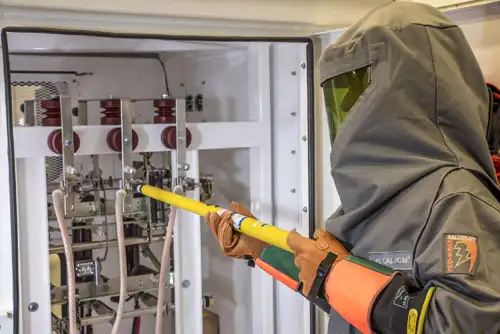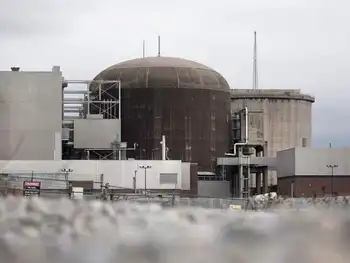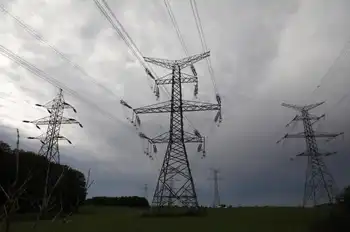In Big Blackout, Hindsight Is Not 20/20
By New York Times
High Voltage Maintenance Training Online
Our customized live online or in‑person group training can be delivered to your staff at your location.

- Live Online
- 12 hours Instructor-led
- Group Training Available
Investigators, including officials from the United States and Canada, say that the eastern power grid - the complex of generators, substations and transmission lines the power failure spread through last August - has become so large, complicated and heavily loaded in the last two decades that it is difficult to determine how a single problem can expand into an immense failure.
Recently, the North American Electric Reliability Council, an industry group founded after a widespread blackout in the Northeast in 1965, issued an optimistic assessment of the electric grid for the coming summer.
"Generating and transmitting resources are expected to be adequate to meet projected demand for electricity," the council said, adding that if all those involved with the grid comply with the council's reliability standards, "there should be no uncontrolled blackouts."
A report issued by the Energy Department recently said the blackout began with violations of some of those standards. The report made extensive recommendations for reducing the likelihood of isolated problems - like the failure of transmission lines in Ohio last August - but it stopped short of establishing how a local problem cascaded into a catastrophe that spread from northeastern Ohio through Michigan, Ontario and New York and into parts of Connecticut and New Jersey.
Investigators did identify how local failures could become larger difficulties in a way that had not been previously known: protective devices called relays could be tricked into shutting down power lines if they sensed short-circuits that did not actually exist. But the report only hinted at solutions.
The report has drawn mixed reactions from electricity experts. While some said it was thorough and balanced, others said that it reflected a bias by its overseer, the Federal Energy Regulatory Commission, to de-emphasize ways that deregulation of the electric market might have affected the system's reliability and vulnerability.
One expert pointed to a math error in the report as evidence of that bias. The report asserted that in the 80 percent of the eastern interconnection that remained intact, a speed-up in the frequency of the alternating current, above the usual 60 cycles, indicated a sudden surplus when power stopped flowing into the area that went dark.
But the surplus number, which would illustrate how power flows have grown under deregulation, is far too small to match the frequency number given.
Robert Blohm, an electricity consultant who first questioned some of the report's calculations, said in an e-mail message: "We've charged ahead with long-distance markets in electricity without realizing/understanding the reliability effects which this blackout brought home."
People involved in preparing the report acknowledged that it focused on the origins of the blackout and did not fully explain how it spread. One specialist, Gerry Cauley, the director of standards at the electric reliability council, said it made sense to address promptly the events that started the blackout because they were easily preventable. The events in Ohio were "so egregious that they just should have never happened," he said.
Alison Silverstein, senior energy policy adviser to the regulatory commission, who drafted much of the report, said in an interview: "Reliability is about taking care of the basics every single day. That's what all of those prior blackouts told us. That's what this blackout told us."
Investigators concluded that power lines initially failed in the blackout because they came into contact with tree branches. The inquiry also found that an Ohio utility and a regional power control agency did not have the computer tools to spot failures as they occurred and make compensating adjustments.
Focusing on the origins of last year's blackout was easier than looking in detail at how it spread, experts said. Mr. Cauley said that lines, substations and generating stations fell in such profusion that plotting just two or three seconds of events takes weeks of work. He says he hopes to finish a detailed analysis by the first anniversary of the blackout.
The report discusses several hypotheses about the spread of the disturbance, including relays confusing huge power flows with short-circuits and reacting by shutting lines. Installation of relays that can tell the difference is probably years away, experts said.
A broader question is what would have happened if components of the system had been set up to tolerate more disruptions, diluting disturbances.
"Maybe the Midwest would not have gone down," said Jack Casazza, a transmission expert and consultant. Conversely, he said, had the relays not tripped, it is also possible that the blackout might have spread further. "Maybe the whole darn East Coast would have gone down. I think it's important to know the difference."
The report cautions that "simulation of these events is so complex that it may be impossible to ever completely prove" theories about the events. Such a thorough analysis was "not a job we could do in the time we had available," said David Meyer, senior adviser to the Office of Electric Transmission and Distribution in the Energy Department.
The report notes that some companies on the grid failed to submit complete data and that some utilities, asked to say when and why various components of the electric system shut down, did not fully respond.
The report's focus on initial failures in the blackout contrasts with similar studies of earlier power failures. In 1978, discussing blackouts in 1965 and 1977, the regulatory commission said that it was "not possible to prevent an occasional localized power failure." The trick, the investigators said then, was to prevent local problems from spreading. Ms. Silverstein said that the 1977 blackout was less than a tenth the size of the 2003 blackout, and easier to diagnose.











